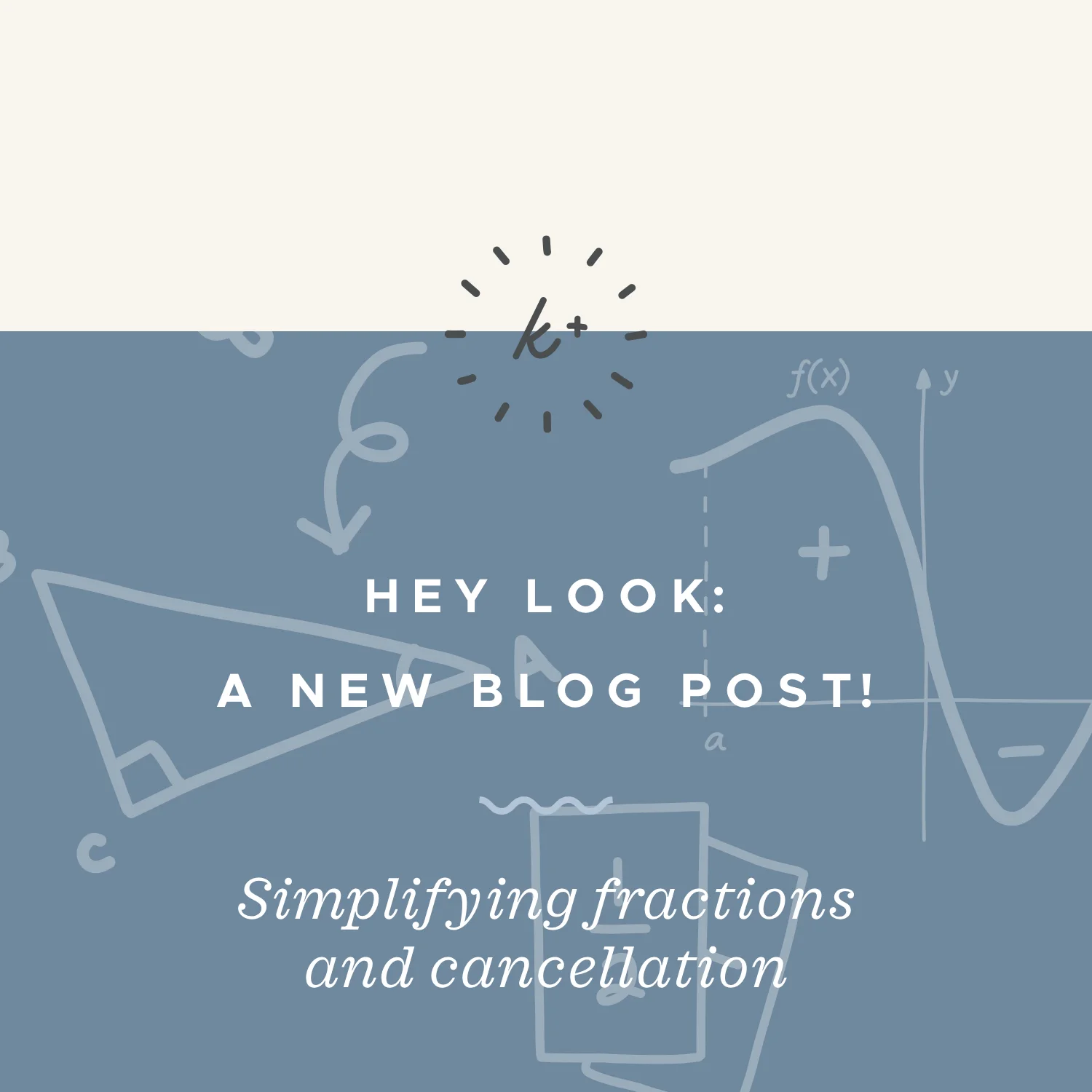Think of a frequency table as a table that displays how frequently or infrequently something occurs. A dot plot display can also be used to show the frequency of small data sets. If I want to categorize the vehicles in a parking lot by type, I could do so in frequency table.
Read MoreIn this lesson, we’ll learn how to convert between fractions, decimals, and percents. We can always use a proportion to help us convert between fractions, decimals, and percents. We’ll follow a very specific rule for each conversion, so we’ll look at the conversion between fractions and decimals, fractions and percents, and decimals and percents.
Read MoreWe already know how to find the general solution to a linear differential equation. But this solution includes the ambiguous constant of integration C. If we want to find a specific value for C, and therefore a specific solution to the linear differential equation, then we’ll need an initial condition, like f(0)=a. Given this additional piece of information, we’ll be able to find a value for C and solve for the specific solution.
Read MoreLike the method of undetermined coefficients, variation of parameters is a method you can use to find the general solution to a second-order (or higher-order) nonhomogeneous differential equation. Remember that homogenous differential equations have a 0 on the right side, where nonhomogeneous differential equations have a non-zero function on the right side.
Read MoreTo find curvature of a vector function, we need the derivative of the vector function, the magnitude of the derivative, the unit tangent vector, its derivative, and the magnitude of its derivative. Once we have all of these values, we can use them to find the curvature.
Read MoreYou should have some intuition about what it means for a graph to be continuous. Basically, a function is continuous if there are no holes, breaks, jumps, fractures, broken bones, etc. in its graph. You can also think about it this way: A function is continuous if you can draw the entire thing without picking up your pencil. Let’s take some time to classify the most common types of discontinuity.
Read MoreIn this lesson we’ll look at how to find the length of a line segment algebraically when we’re given information and measurements about parts of the line segment. Remember that a line segment is a finite piece of a line, named by its endpoints.
Read MoreThere are two ways that fractions get involved in exponents. The first is when the exponent itself is a fraction. The second is when the base is a fraction, and we’re raising that fractional base to an exponent. This lesson will cover how to find the power of a fraction as well as introduce how to work with fractional exponents.
Read MoreThe transitive property is another term in math that is really just logic. It makes sense that if a=b and b=4, then a must also equal 4. Transitive comes from the word “transit” which means to move from one place to another. In this case we can “jump” over the middle and link the ends together since the ends both equal the middle.
Read MoreIdentity numbers are numbers that don’t change the “identity” of the original value. The identity for addition is 0. The identity for multiplication is 1. The reason is that you can add 0 to any number and it doesn’t change the original value, and you can multiply any number by 1 and it doesn’t change the original value.
Read MoreExtrema are points on a function where a maximum or minimum exists. It’s easy to identify the extrema of a function when we look at its graph, because we just look at high points and low points, but we need to be able to use math to calculate their exact coordinates.
Read MoreTelescoping series are series in which all but the first and last terms cancel out. If you think about the way that a long telescope collapses on itself, you can better understand how the middle of a telescoping series cancels itself.
Read MoreWe can integrate in any order, so we’ll try to integrate in whichever order is easiest, depending on the limits of integration, which we’ll find by analyzing the object E. Keep in mind that, when it comes to limits of integration, you want limits that are in terms of the variables left to be integrated.
Read MoreThe reason we want to reduce fractions to lowest terms is that even though a fraction like 630/945 is actually the same as 2/3, that isn’t obvious to us when we look at it since the numbers are so big. But if we simplify that larger fraction down to 2/3, then we’ll be able to easily tell that we have “2 out of 3 parts.”
Read MoreWhen multiplying like terms (terms with the same base) we’ll multiply the coefficients and add the exponents. When dividing like terms we’ll divide the coefficients and subtract the exponents. “Canceling” is a term often used instead of subtracting the exponents, but it means the same thing.
Read MoreIn a direct variation equation you have two variables, usually x and y, and a constant value that is usually called k. The main idea in direct variation is that as one variable increases the other variable will also increase. That means if x increases y increases, and if y increases x increases. The number k is a constant so it’s always the same value throughout a direct variation problem.
Read MoreIn this lesson we’ll look at how to find the length of an arc when we’re given the radius and the measure of the corresponding central angle in degrees.
Read MoreWe can add, subtract, multiply, and divide decimal numbers. Addition and subtraction of decimal numbers works the same way as whole number addition and subtraction; we just need to make sure that we line up the decimal points.
Read MoreIn this lesson we’ll look at methods for factoring quadratic equations with coefficients in front of the x^2 term (that are not 1 or 0). Factoring means you’re taking the parts of an expression and rewriting it as parts that are being multiplied together (the factors). Factoring a quadratic equation means we will write equations of the form ax^2+bx+c into the form (px+r)(qx+s), where a, b, c, p, q, and s are all real numbers and a≠1,0.
Read MoreGiven three points that lie in a plane, we can find the equation of the plane passing through those three points. We’ll use a cross product to find the slope in the x, y, and z directions, and then plug those slopes and the three points into the formula for the equation of the plane.
Read More





















